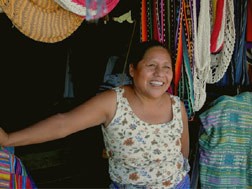
Immigration: Who Has Access to the American Dream? 1997
Distributed by Films for the Humanities and Sciences, Box 2053, Princeton, NJ 08543-2053; 800-257-5126
Produced by Michael W. Doyle & Michael J. Schmiedeler
Director n/a
VHS, color, 29 min.
High School - Adult
History
Date Entered: 11/09/2018
Reviewed by Orlando Archibeque, Auraria Library, University of Colorado at DenverIn 1996 Congress established more restrictive immigration policies with the enactment of the Illegal Immigration Reform Act and Immigration Responsibility Act. The video's premise is that these more restrictive guidelines have gone too far and are penalizing innocent victims, particularly legal immigrants and immigrants who are seeking political asylum in the United States. For example, prior to 1995, political asylum applicants were routinely and automatically granted work authorizations, enabling them to provide for themselves and their families. Now, such applicants must wait 150 days after applying to receive work authorizations, causing undue hardship.
In a series of brief personal interviews with recent immigrants (all of whom are English-speaking) and with several experts from immigration advocacy organizations, the video attempts to put a human face to a very complex social and legal problem. In doing so, a number of popular misconceptions about immigrants are debunked. The viewer is introduced to immigrants who are hard-working, industrious, law-abiding, and tax-paying individuals. They have high educational expectations of their children. Some take jobs that native-born Americans are loathe to take, and there are some who are highly-skilled, sought-after professionals. Census statistics indicate that immigrants are less likely than their native-born counterparts to rely on public assistance. Some even say they cry when the American national anthem is played at televised sports events.
At the end of the program are two more extensive interviews with a Korean couple and a Kenyan couple. The Korean couple runs a very successful Korean deli in New York City. Though they work long hours, the parents spend as much time with their children as possible. They stress hard work and education to their children. The Kenyan couple faces the terrible possibility that their family may be split up (half in Kenya, half in the U.S.) because of a technicality in the immigration law.
Since these are very personal stories, the video relies almost exclusively on the narrator-interviewee format. It is used most successfully in the lengthy interviews with the Kenyan and Korean couples. A few of the other, much shorter interviews lack depth and are not very illuminating.
This is a one-sided presentation of a very complex problem. One Immigration and Naturalization Service official appears in the video, but only for a very brief period. There are powerful organizations and individuals who are supportive of the new, more restrictive guidelines, but their opinions are not expressed in this video. Though one-sided, it positively presents the minority viewpoint at this time, and by doing so it can provide a valuable lesson to viewers.
This video is best suited for adult audiences, particularly for high school students in social studies classes, and for lower-division college students in sociology, ethnic studies, public policy, and political science courses. Its 29-minute length will appeal to instructors who wish to use this video as a way to initiate classroom discussion on a controversial subject. Recommended for public libraries, high school media centers, and college media collections.